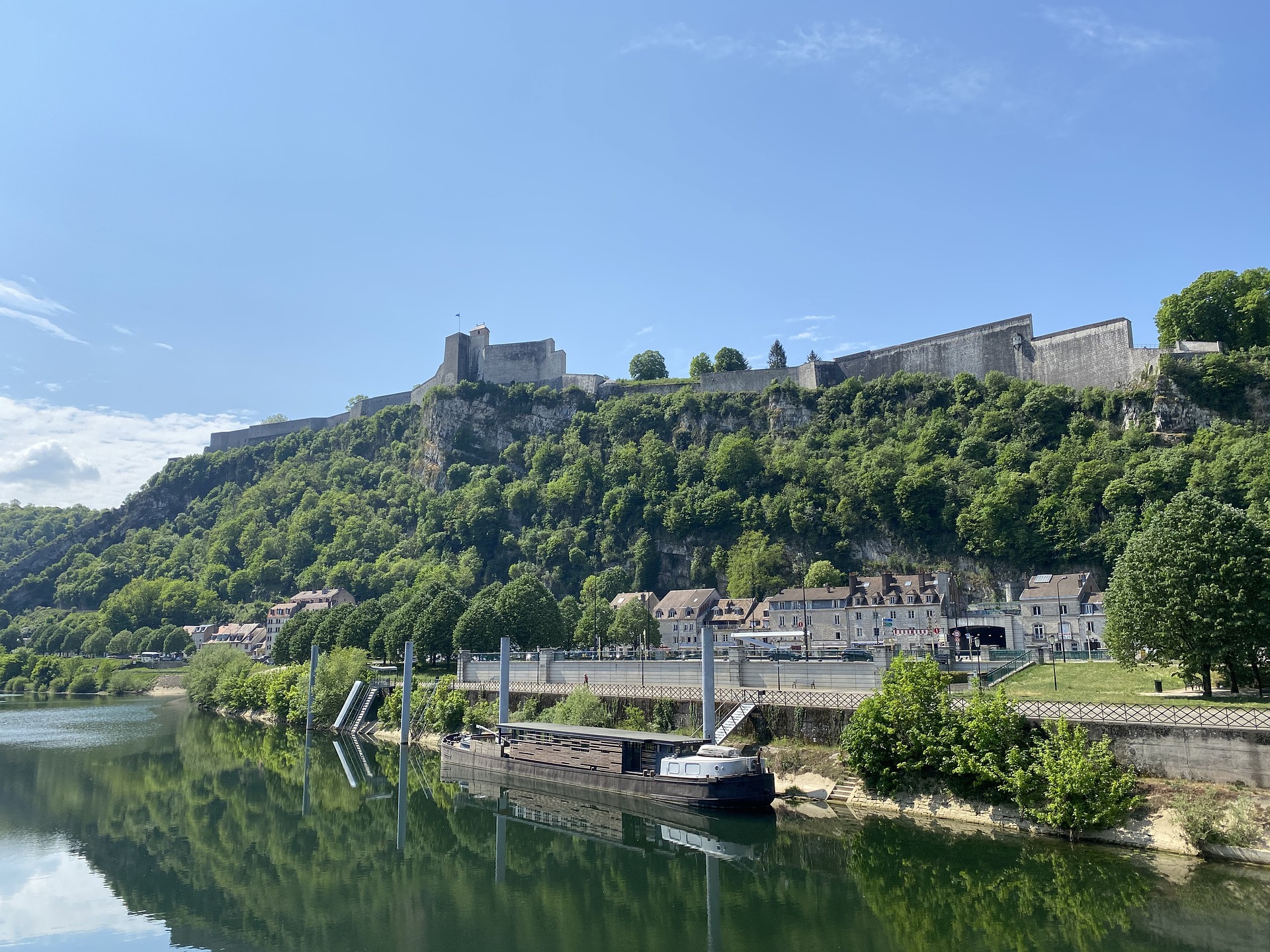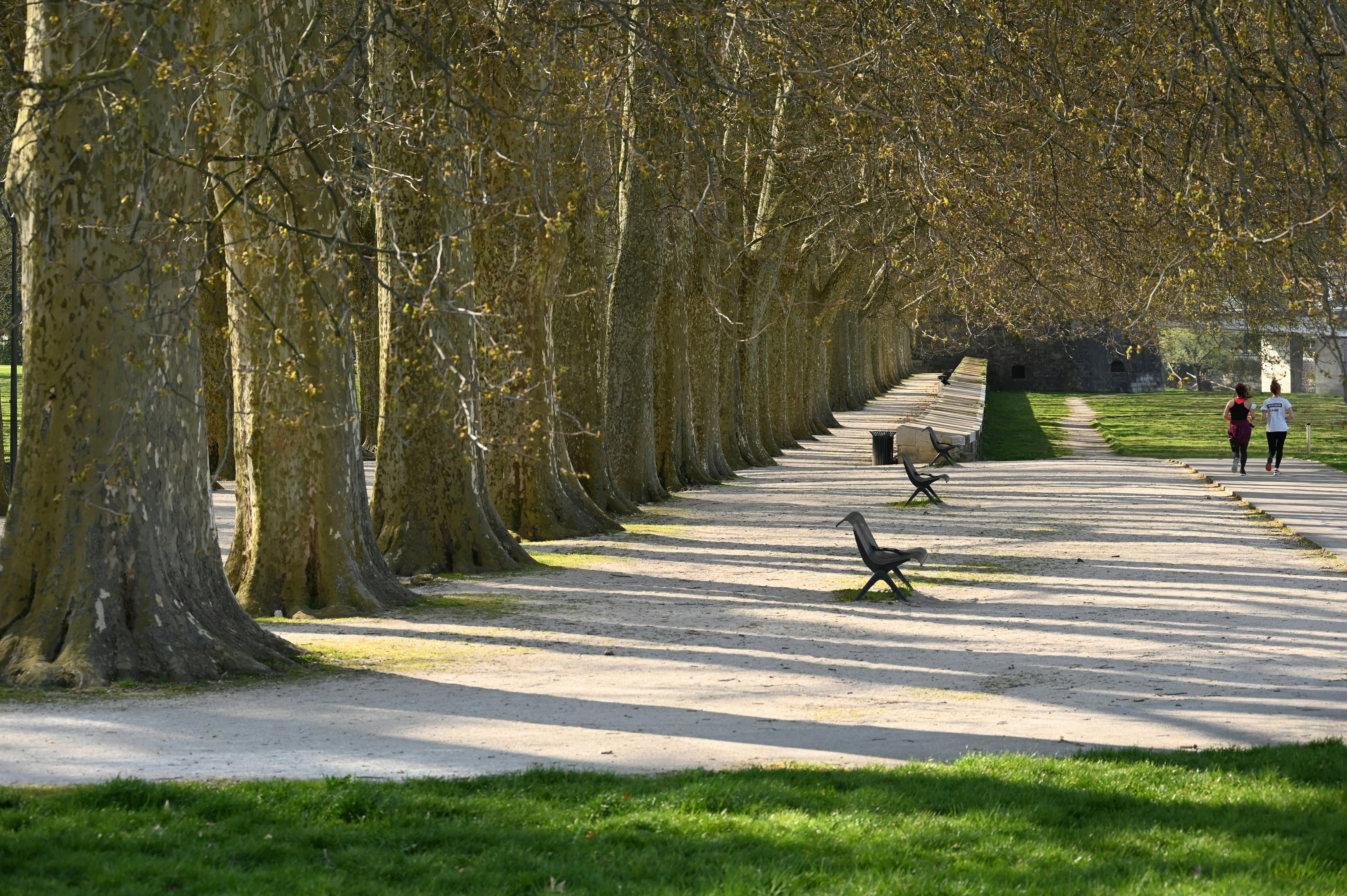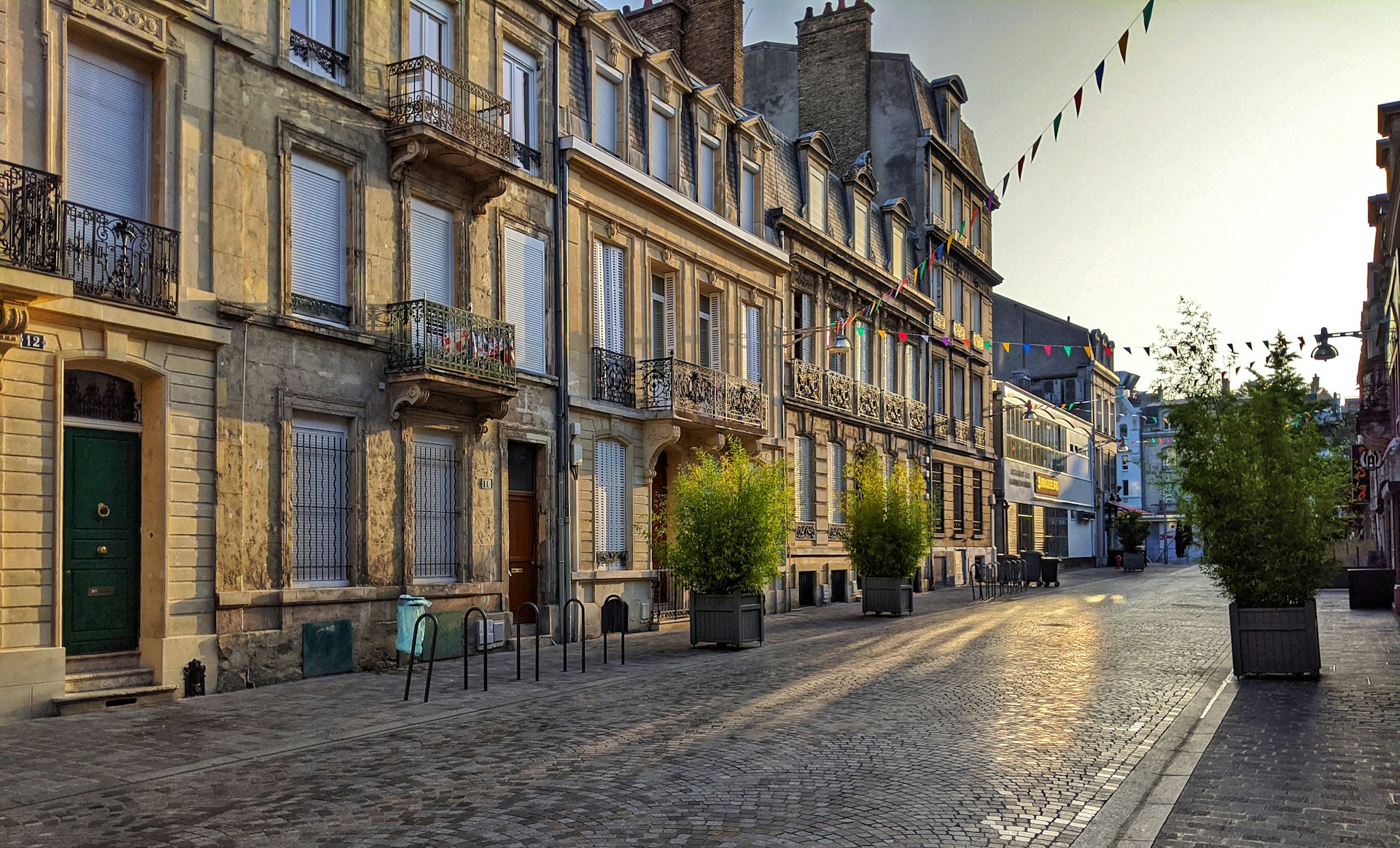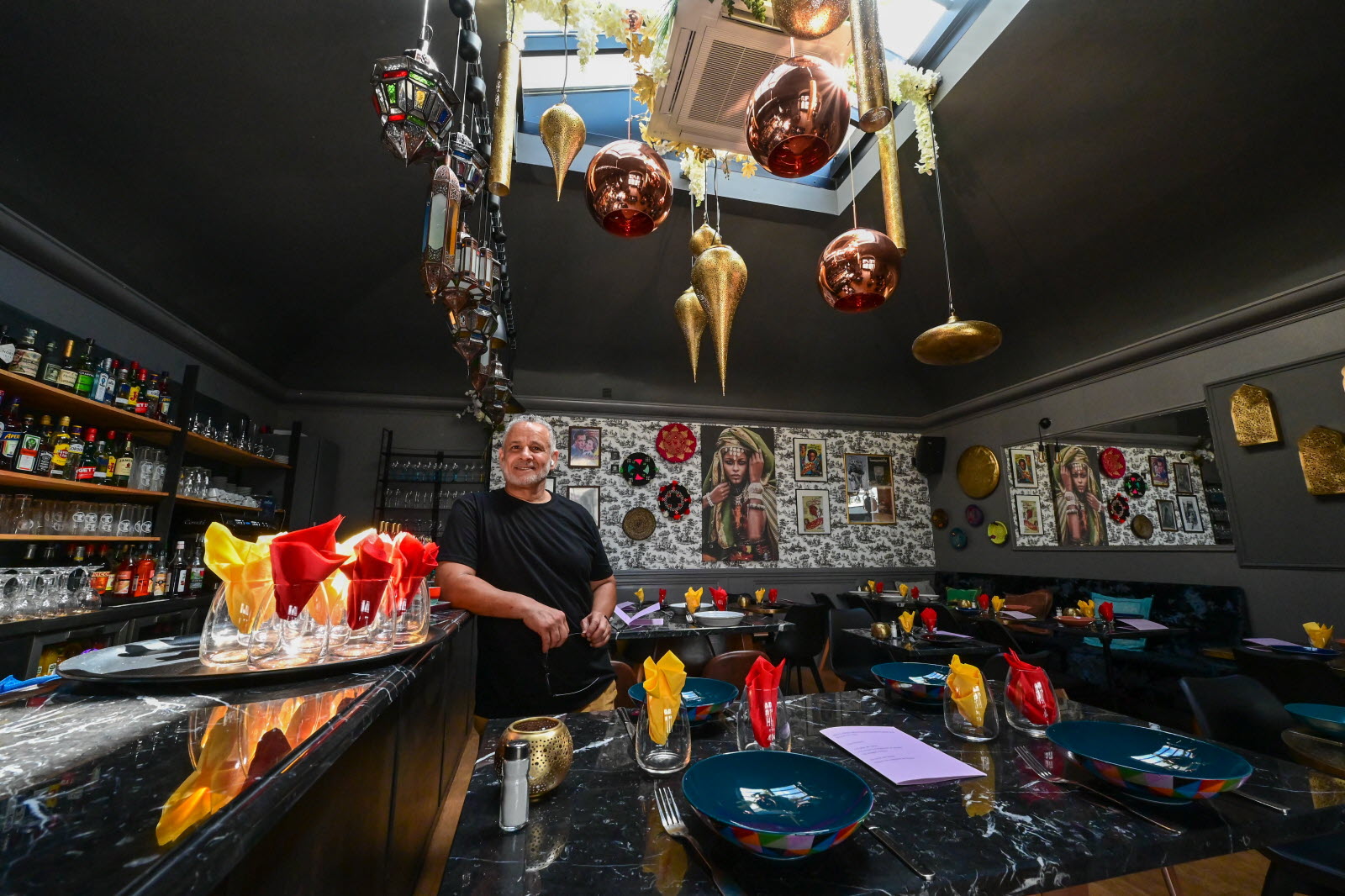Besançon: A French city where time is treasured
In the heart of eastern France, a city of remarkable beauty and historical significance can be found. Encircled by the meandering Doubs River and guarded by an imposing citadel, this hidden gem has captivated visitors for centuries. Welcome to Besançon, a place where Roman ruins stand alongside Renaissance palaces, and where the legacy of watchmaking ticks away in harmony with modern innovation.

A Natural Fortress
The cityscape of Besançon is dominated by its natural topography. The old town is cradled within a horseshoe bend of the Doubs River, creating a natural moat that has been used for defense since ancient times. This unique geography was recognized by Julius Caesar himself, who described the area as "practically enclosed by the river on all sides."
Atop the hill overlooking the city, the Citadel of Besançon stands as a testament to military engineering. Designed by the renowned Vauban in the 17th century, this UNESCO World Heritage site offers breathtaking views of the surrounding landscape. Visitors are often surprised to find that the citadel houses not only historical exhibitions but also a zoo and several museums, making it a multifaceted attraction.
Things to do in Besancon
A Walk Through Time
As one descends from the citadel into the old town, centuries of history unfold before their eyes. Roman ruins, including the well-preserved Porte Noire triumphal arch, serve as a reminder of the city's ancient origins. The streets are lined with elegant Renaissance mansions, their façades adorned with intricate stonework and wrought-iron balconies.
The Palais Granvelle, a 16th-century mansion turned museum, stands as a prime example of Renaissance architecture in Besançon. Its courtyard often echoes with the sounds of classical music concerts, a nod to the city's rich cultural heritage.
The Capital of Time
Besançon's identity is inextricably linked to the art of timekeeping. Known as the "Capital of French Watchmaking," the city's horological tradition dates back to the 18th century. This legacy is celebrated at the Museum of Time, housed in the stunning Palais Granvelle. Here, visitors can marvel at a collection of timepieces that span centuries, from ancient sundials to cutting-edge atomic clocks.
The precision and craftsmanship that defined Besançon's watchmaking industry have left an indelible mark on the city's character. Today, this spirit of innovation continues in the form of high-tech industries and research centers, particularly in the fields of microtechnology and biomedical sciences.
A City of Culture and Learning
Besançon's intellectual heritage is as rich as its industrial one. The city is home to one of France's oldest universities, founded in 1423. The presence of thousands of students gives the city a youthful energy, particularly evident in the vibrant Battant district, where cafes and bars buzz with conversation late into the night.
The influence of Victor Hugo, Besançon's most famous son, can be felt throughout the city. The house where he was born has been transformed into a museum, offering insights into the life and work of this literary giant.
Green Spaces and Natural Beauty
Despite its urban character, Besançon is a city that embraces nature. The Parc Micaud, with its elegant promenade along the Doubs River, provides a tranquil escape from city life. For those seeking more adventure, the surrounding Jura Mountains offer opportunities for hiking, cycling, and winter sports.
A Gastronomic Journey
The culinary traditions of Besançon reflect its position at the crossroads of different regions. Comté cheese, produced in the nearby mountains, features prominently in local dishes. The city's markets, particularly the covered market of Beaux-Arts, showcase the bounty of the Franche-Comté region, from smoked Morteau sausages to the famous absinthe liqueur.
A City for All Seasons
Each season brings a new face to Besançon. Spring sees the city's parks burst into bloom, while summer invites outdoor concerts and festivals. Autumn paints the surrounding forests in vibrant hues, and winter transforms the citadel into a snow-capped fortress.

As the sun sets over the Doubs River, casting a golden glow on the city's ancient stones, one can't help but feel the weight of history and the promise of the future that coexist in Besançon. This captivating city, with its blend of natural beauty, historical significance, and forward-thinking spirit, continues to enchant visitors from around the world.
For those seeking to explore more of France's hidden treasures, a visit to Angers in the Loire Valley offers another glimpse into the country's rich tapestry of history and culture.
When to visit Besancon
January
February
March
April
May
June
July
August
September
October
November
December
Top attractions in Besancon
Show all
Museum of Fine Arts and Archeology of Besançon
In the heart of Besançon, a city steeped in history and culture, an extraordinary treasure trove of art and artifacts awaits discovery. Centuries of human creativity and ingenuity are preserved within the walls of a magnificent 18th-century building, inviting visitors to embark on a captivating journey through time and artistic expression.
Besancon - FRANCE

Museum Of Times
In the heart of France's watchmaking capital, a unique institution stands as a testament to humanity's enduring fascination with time. Besançon, a city steeped in history and innovation, houses the Museum Of Times, a captivating destination where the past and present of timekeeping are intricately woven together. This extraordinary museum invites visitors to explore the intricate world of horology, offering a glimpse into the artistry, science, and cultural significance of timekeeping throughout the ages.
Besancon - FRANCE

Besançon Citadel
France's eastern frontier is guarded by a formidable sentinel, a stone giant that has watched over the city of Besançon for centuries. Perched atop a rocky outcrop, the Citadel of Besançon stands as a testament to military engineering and architectural prowess. Yet, within its imposing walls, a different kind of treasure is housed – one that celebrates life, nature, and the enduring spirit of human resilience.
Besancon - FRANCE

Victor Hugo Birthplace
Besançon, a city steeped in history and culture, offers visitors a unique glimpse into the life of one of France's most celebrated literary figures. Nestled within the winding streets of this charming Franche-Comté capital, a modest apartment stands as a testament to the enduring legacy of Victor Hugo, the renowned author, poet, and political activist.
Besancon - FRANCE

Astronomical clock
In the heart of Besançon, a city steeped in history and culture, an extraordinary timepiece captivates visitors and locals alike. The Astronomical Clock, housed within the magnificent Cathedral of Saint-Jean, stands as a testament to human ingenuity and artistic brilliance. This remarkable creation not only tells time but also weaves together astronomy, religion, and craftsmanship in a mesmerizing display that has endured for centuries.
Besancon - FRANCE

The Little Train of Besançon
Besançon, a city steeped in history and natural beauty, offers visitors a unique way to explore its rich heritage and picturesque landscapes. Among its many attractions, one stands out for its charm and ability to transport passengers through time and space: The Little Train of Besançon. This delightful mode of transport provides an enchanting experience for tourists and locals alike, offering a blend of education, sightseeing, and pure enjoyment.
Besancon - FRANCE
Michelin Restaurants in Besancon
Show all
Le Sauvage
At the foot of the Vauban Citadel, this smart hotel occupies the former convent of the Poor Clares. The restaurant provides a cosy setting, with old parquet floors and tablecloths, and – a major asset – its terrace overlooking the park! Chef Hugo Mathieu (trained in Lyon's top restaurants) is no novice, judging by his polished dishes: glazed pea velouté, cod loin fillet cooked at 50C, crispy pistachio tartlet.
Besançon - FRANCE

Le Parc
In the heart of the Parc Micaud, on the banks of the River Doubs, this glass, concrete and steel pavilion is the Modernist work of Besançon architect Michel Demenge. The chic, contemporary interior, with its open-plan kitchen, also offers a view of the river. Dishes are in a contemporary vein, the menu under the supervision of the chef of nearby Château de Germigney.
Besançon - FRANCE

Le Saint-Pierre
Savour fine dining with a predominance of fish dishes and quality produce in an elegant setting of open stonework and modern touches. The St - Pierre makes for an idyllic experience!
Besançon - FRANCE

Le Manège
At the foot of the citadel, this former military riding arena specialises in delicate, flavoursome fare rich in regional twists (such as a mushroom crust cooked in vin jaune or their amazing sliced black pudding). The self-taught chef is a stickler for perfection – as the first and last bite will confirm.
Besançon - FRANCE

Le Saint Cerf
"This contemporary bistro with a pleasant interior proposes tasty food rife with various influences, including Asian touches, skilfully handled from start to finish, without ostentation. Add to that a distinct tendency towards the ""natural"" (seasonality, ingredients) and a handful of vegetarian dishes and you get an ambassador of the Besançon's revival. "
Besançon - FRANCE

Loiseau du Temps
Set in a former 18C wheat barn, this handsome dining room, depicted by vaults and contemporary details, is home to the most recent addition to the Loiseau Group. The menu focuses on produce and recipes from Bourgogne-Franche-Comté: gravlax of Jura trout, snails in parsley, poultry reared by Gaston Gérard… Each dish is generously crafted and beautifully presented. Enticing dessert trolley and a fine selection of wines, particularly by the glass.
Besançon - FRANCE

Épicéa
In a narrow street near the Doubs, this couple, who earned their stripes in prestigious establishments, work in tandem in the open kitchen, occasionally venturing out to serve diners. Their single set menu, based on carefully selected seasonal produce and enhanced by wild-picked ingredients, is akin to a natural history lesson: carrot / marjoram / plantain / burnet / bay leaf; black pork / pumpkin / poultry jus / spring onion oil; beetroot / raspberry / coriander / iced nougat.
Besançon - FRANCE
Related articles
Show all
The 15 best things to do in Menton
The French Riviera has long been celebrated for its glamorous resorts and star-studded beaches. Yet, tucked away on the Italian border lies a gem often overlooked by the jet-setting crowd. With its pastel-hued buildings cascading down to the azure Mediterranean, this charming coastal town offers a quieter, more authentic slice of Côte d'Azur life. Here, the pace slows, allowing visitors to savor the simple pleasures of Provençal culture, from sun-drenched lemon groves to art-filled gardens.
Menton - FRANCE

Best 15 things to do in Clermont-Ferrand
In the heart of France's Auvergne region, a city of contrasts awaits discovery. Ancient volcanic landscapes serve as a backdrop to a vibrant urban center, where centuries of history blend seamlessly with modern innovation. This hidden gem, often overlooked by international travelers, offers a unique tapestry of experiences that can be savored by those willing to venture off the beaten path. From imposing Gothic cathedrals to cutting-edge technology museums, from tranquil parks to bustling markets, a world of exploration beckons.
Clermont-Ferrand - FRANCE

The 15 best things to do in Pau
Nestled at the foot of the Pyrenees, a hidden gem awaits discovery in southwestern France. This charming city, steeped in history and surrounded by natural beauty, offers a unique blend of cultural richness and outdoor adventure. From majestic castles to world-class sports facilities, visitors can be captivated by a diverse array of experiences that showcase the best of French heritage and contemporary life.
Pau - FRANCE

Visit Europe - Travel more and spend less
Looking to discover the most unique places to visit in Europe? Want to hear more about some of the most beautiful and prestigious coastal destinations in Europe? Ready to create your own legendary experience? Good news - you've come to the right place. In this article, we're going to take a look at some of the very best countries across Europe. Below we'll cover where to go for a city break, a romantic getaway, a family or beach holiday, a cultural or gastronomic trip.
FRANCE

Gorges du Verdon - The European Grand Canyon
The Gorges du Verdon, otherwise known as the Grand Canyon du Verdon, is one of the most beautiful river canyons in all of Europe. It flows down from the Verdon River and is about 700 meters deep and 25 kilometers long. It is truly breathtaking. If you know anyone who’s visited the Gorges du Verdon, then you’ve already heard of how amazing this site really is. As if the pictures aren’t amazing enough, you can travel the lakes of the Verdon by kayak. While it’s not the kind of place you would stay for your vacation, it’s close enough to the French Riviera that you can certainly make a day trip or two to enjoy its vista. Because it is so close to the Côte d’Azur, it’s a popular tourism spot for vacationers from all over. If you’re heading to the French Riviera for your holiday, you don’t want to miss out on all the best things to do in Gorges du Verdon.
Gorges du Verdon - FRANCE

The top 15 things to do in Reims
In the heart of France's Champagne region, a city steeped in history and bubbling with culture awaits discovery. From ancient Roman ruins to Art Deco treasures, from world-class gastronomy to the effervescent legacy of champagne, this destination offers a intoxicating blend of experiences. Whether you're a history buff, a foodie, or simply seeking the joie de vivre of French living, these top 15 activities will ensure an unforgettable visit.
Reims - FRANCE









 Home
Home Wishlist
Wishlist